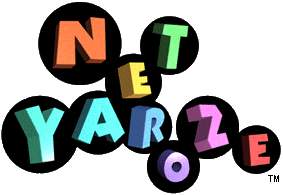
This article was originally published in the February 1998 issue of Edge (E55).
. . .
VIDEOGAME CREATION UNDER THE MICROSCOPE
Weighing up Yaroze
The idea of setting up a development studio and creating a PlayStation masterpiece often seems attractive to gamers — until they find out about the tens of thousands of pounds they'll need to pay for the development kit. Alternatively though, becoming a net Yaroze member and bashing out a game on it costs just £550 (as long as you have a decent PC to connect it to). Not only that, but Sony are confident this innovative creation is actually powerful enough to come up with the professional goods — even going as far as to say that Namco's classic Ridge Racer could have been put together on Yaroze. So, if this is the case, what actually are the differences between the professional PlayStation Development Kit and its more financially modest home companion?
The most obvious contrast, of course, is physical. The professional dev hardware is simply a circuit board which fits inside the PC and communes directly with it via PCI. Yaroze, on the other hand is a complete reproduction of the PlayStation console which can only be attached to the PC via a serial cable. The latter is admittedly a slower form of communication and one of the major gripes programmers have with the system is its agonisingly protracted download times. However, once the data has been uploaded from the PC, there need be no communication between the two machines — which means no hit on the framerate.
The second major difference is the amount of RAM the two systems can utilise. The professional development hardware allows programmers to play about with up to 8 MB of data, whereas Yaroze only offers the capacity of the consumer PlayStation — 1.5 MB or game code, one MB for graphics and 0.5 MB for sound. Although professional developers have to get their PlayStation code down to 3.5 MB eventually, some claim that the extra RAM available through the professional kit is useful for getting things working quickly at the early stages of coding. On the other hand, it could be argued this bonus 6.5 megs is a false safety net: if the game won't fit into 3.5 then it can't be released. End of story.
Perhaps the main qualm professional developers have with Yaroze, however, is its lack of low level graphics libraries. As Fred Williams, Senior Programmer at Corrosive Software states, 'The proper code libraries let programmers talk to the PlayStation at a polygon level with 'do it yourself' lighting, while the Yaroze libraries leave out the 'primitive' (or low level) stuff and insist you use Sony's RSD '3D Model' and TMD '2D Image' formats. This means that Yaroze's fine for games involving 3D objects (animating or otherwise) but poor at 'environment stuff' which is much more efficient at polygon level. From my point of view this is the major limitation of the system.
'I should point out that Sony did eventually release the 'polygon format' documentation over the web,' continues Williams. 'However, they didn't include the C structure equivalents which makes the whole thing unusable, so home programmers are still left to figure that out by themselves.' For its part, however, Sony insists that there is fully documented sample code for direct polygon manipulation and rendering on the Yaroze website, which may not be as user-friendly as the professional kit utilities, but still does the job.
For anyone who does run into dificulties, there are plenty of development aids available to Yaroze users. Code Warrior from Metrowerks, for example, is an integrated development tool which combines a C compiler with assembly support and debuggers to make coding in a Windows environment much easier. Yaroze also supplies utilities which allow users to import data from 3D Studio and Animator Pro, both of which are available to Yaroze members at a reduced price. This all adds to the price of developing on Yaroze, but the cost would quickly be recouped if a decent demo attracted the attention of a potential employer.
Inevitably, then, Yaroze is a scaled-down version of the professional kit. Along with the above differences, the system also offers much more limited CD access (the machine can't play gold discs or stream FMV, but it can run NTSC and PAL games, as well as audio CDs) and there is no verbal development support from Sony — although the Net Yaroze website does offer technical advice along with the chance to swap ideas and queries with other users.
Ultimately, the limits of the system may actually work in its favour. If a Yaroze user can come up with an impressive demo under restricted circumstances, a prospective employer is bound to wonder what they could achieve with the real thing. Jon Cartwright, Studio Head at Corrosive suggests, 'It's really easy to just sit down at a PC and code with no regard for the amount of RAM that's needed, But with a small system like Yaroze, you have to code tightly get everything in that you need. That's certainly no bad thing'.
. . .
ネットやろうぜ
